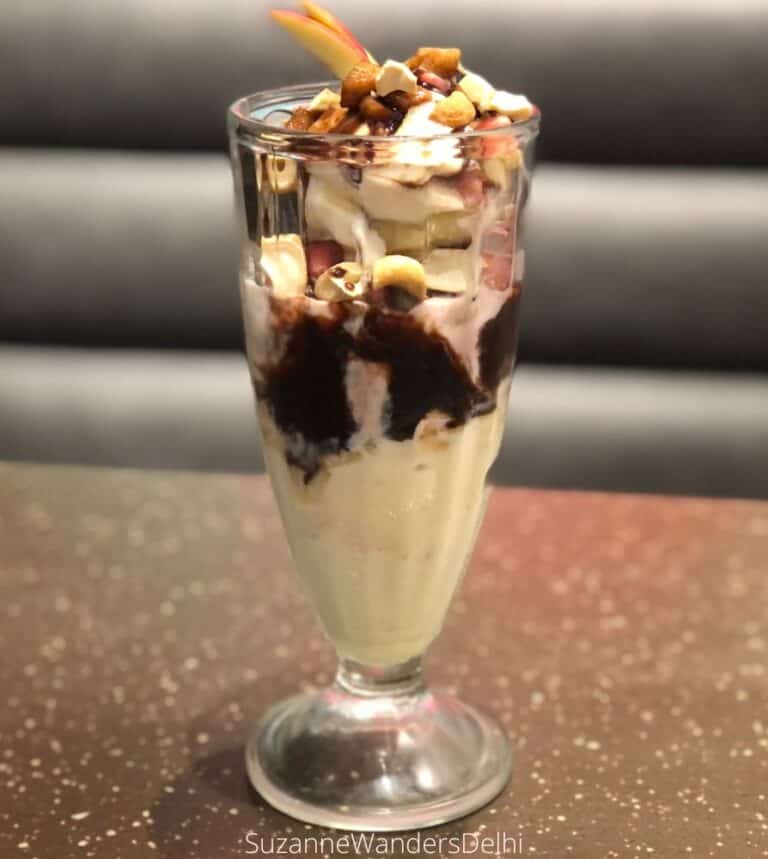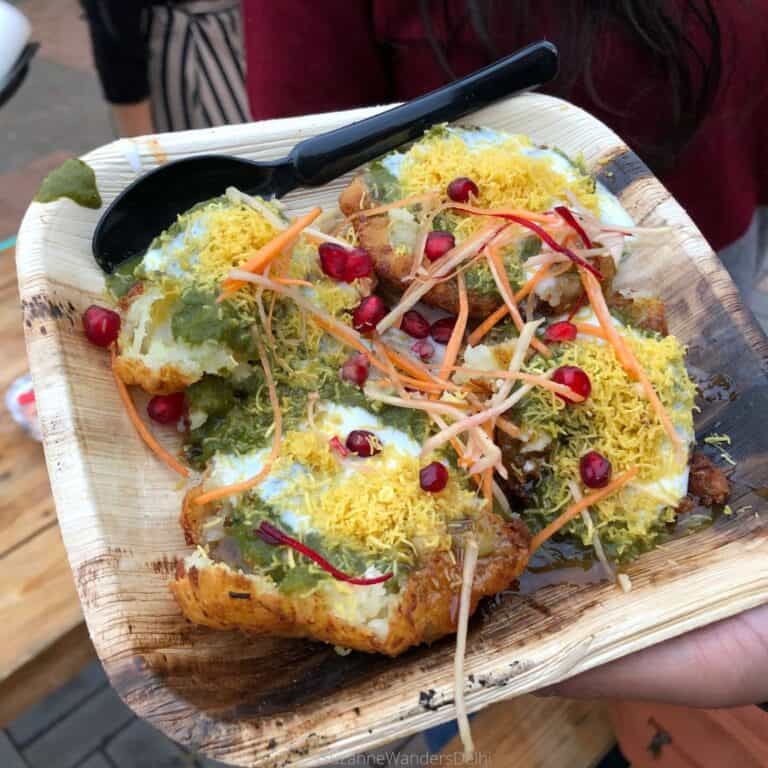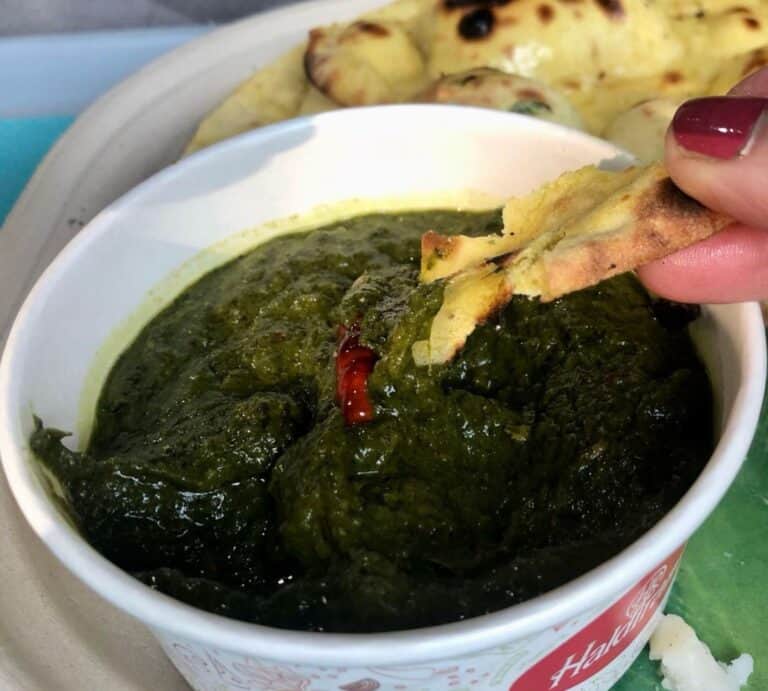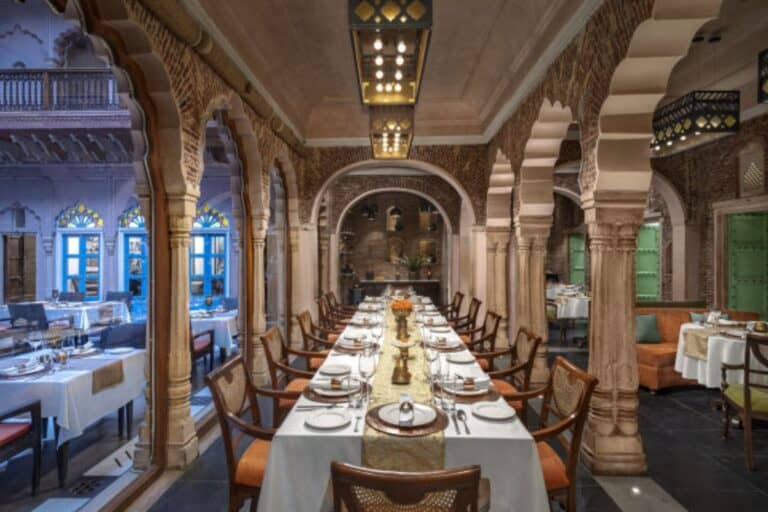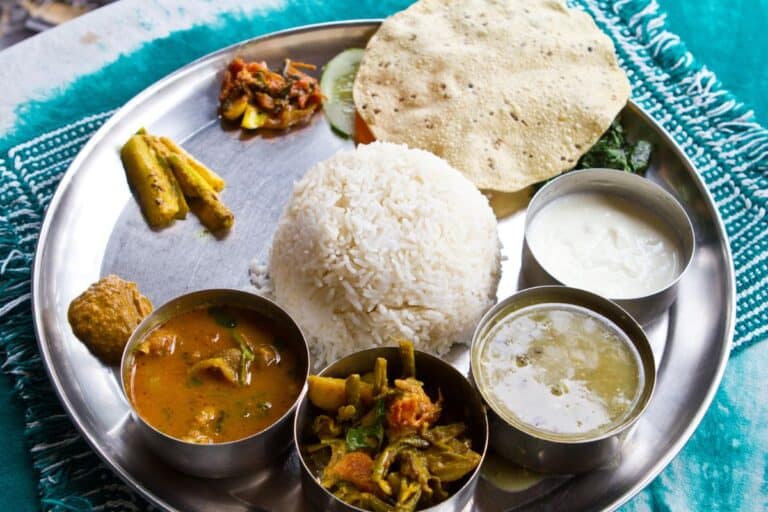Suzanne Wanders Delhi contains affiliate links. If you make a purchase using one of the links below, I may receive compensation at no extra cost to you. I only recommend products and services I use and trust. Read my disclaimer for more information.
This is one of the top questions almost every single visitor to India asks. And the answer is yes, it is safe for tourists to eat street food in India. How do I know? Well, I’ve lived in India since 2018 and I’ve eaten street food all over the country. I eat street food on a regular basis, pretty much every chance I get.
Indian food is one of the most diverse and delicious cuisines in the world, and the best of it is on the streets. This is where you’ll find the freshest, cheapest and most inventive foods.
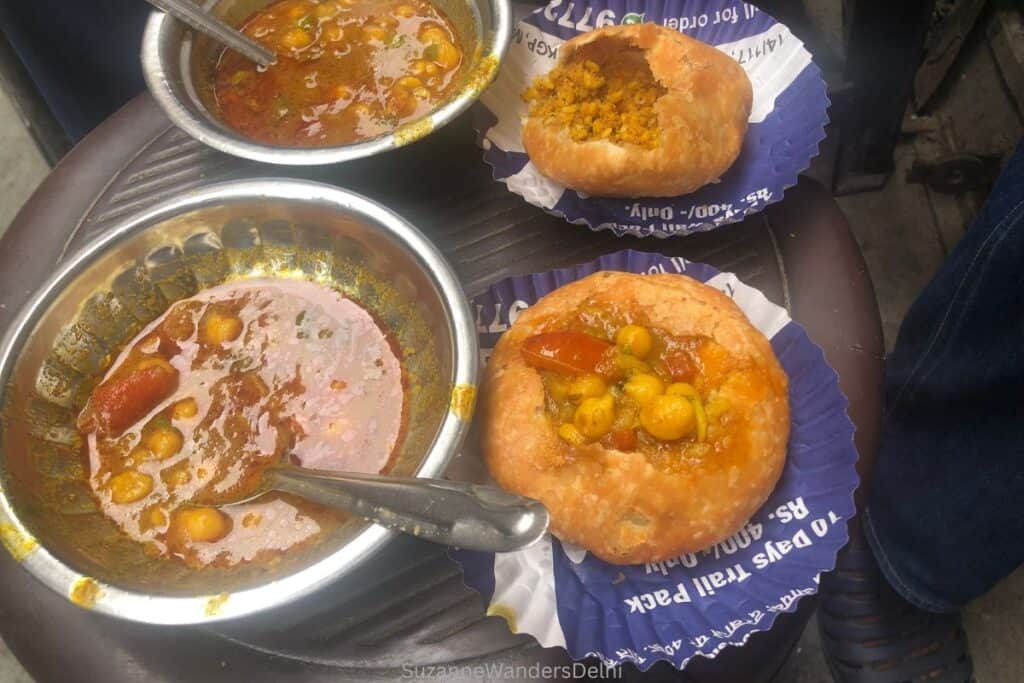
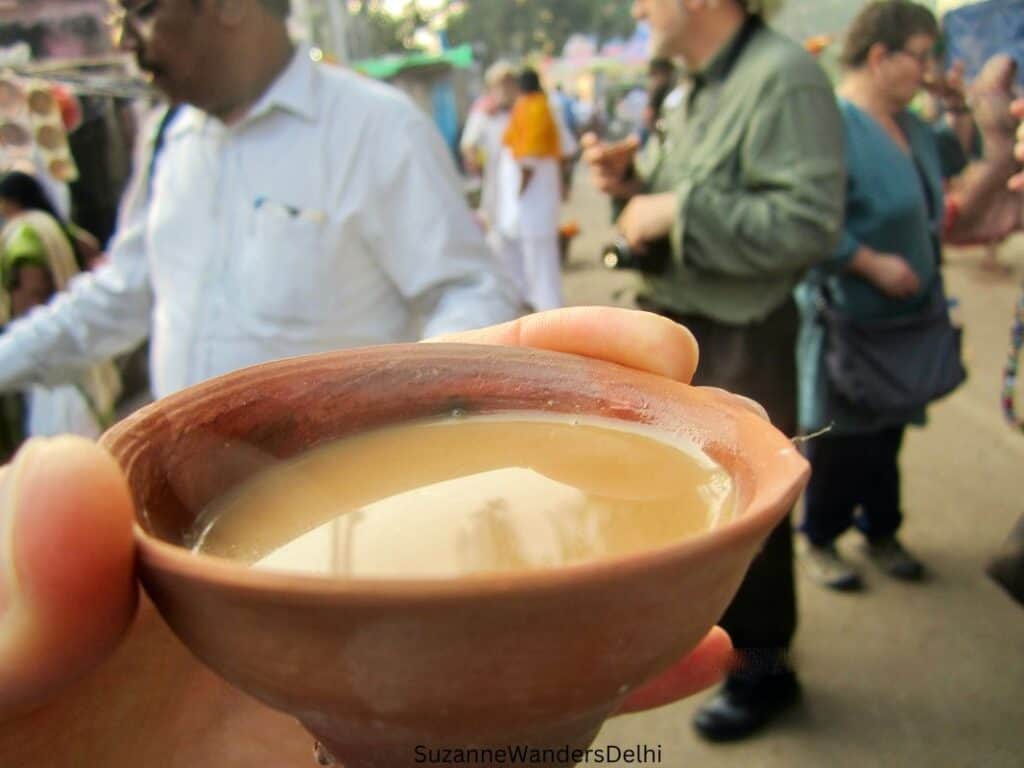
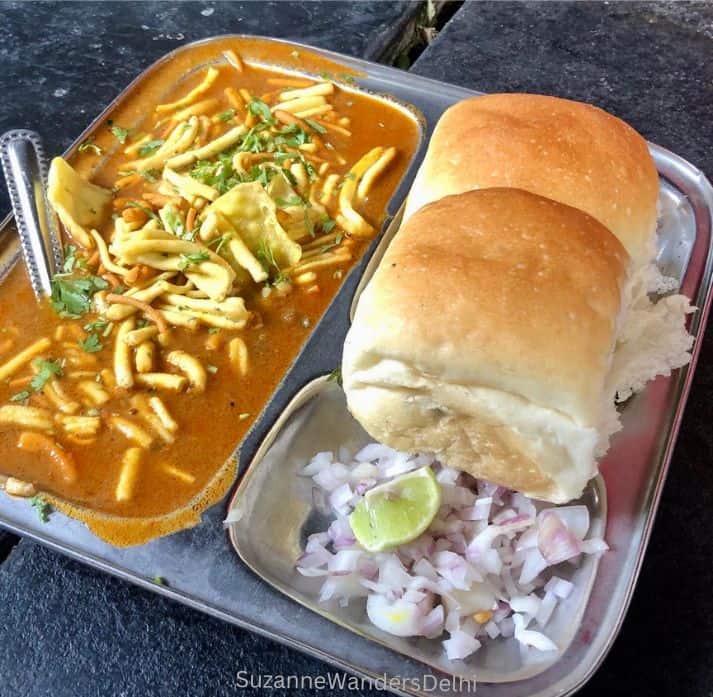
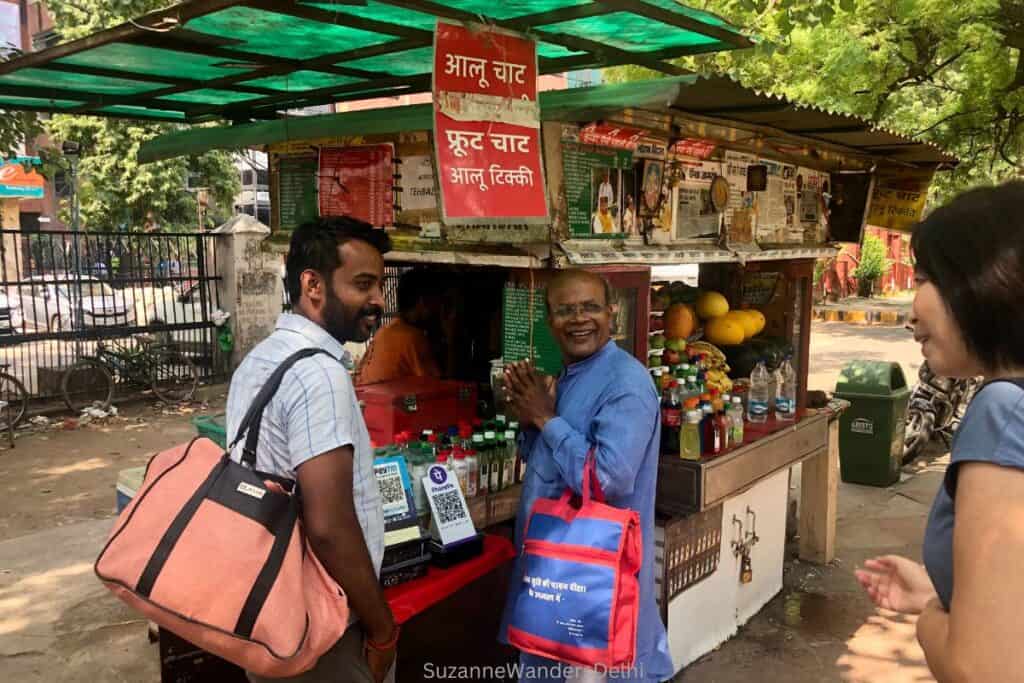
So many tourists come to India and are afraid to eat the food on the streets. It’s such a shame, because the food is amazing. It’s also incredibly fun, a very authentic experience and super cheap!
Street food is very much part of the culture of India, at every socio-economic level. Everyone from rickshaw drivers to doctors and lawyers enjoy eating from the food stalls.
Street food stands are everywhere: on roads, sidewalks, in markets, outside railway, bus and metro stations, outside apartment blocks and office buildings and beside entrances to heritage sites. You cannot escape street food in India!
Is street food in India safe for tourists to eat?
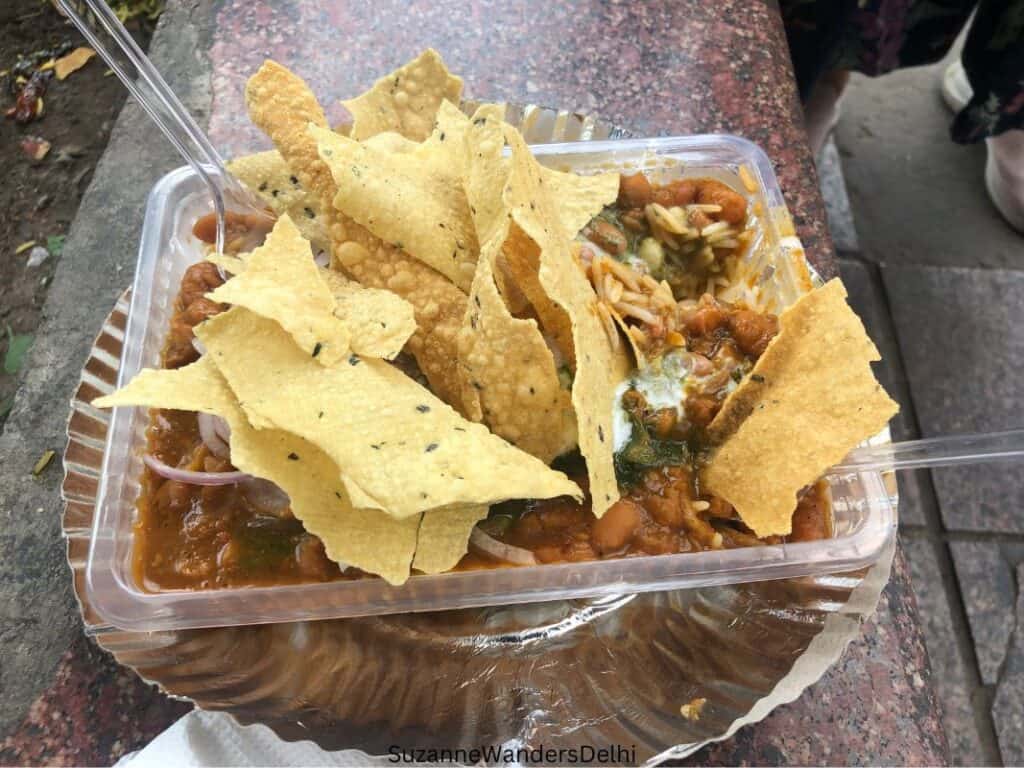
Street food is safe to eat, but you have to exercise some common sense. It is a huge misconception that street food is not safe for tourists to eat in India.
There have been many times when I have been eating from a food stall, and tourists stop to watch. I can tell they want to try it but are nervous. Inevitably they tell me they read or were told not to eat street food.
You are missing one of the best things about India if you don’t try the street food! Just think – India has a population of 1.4 billion, and most of them eat street food. Could that many people be wrong?
How to eat street food safely in India
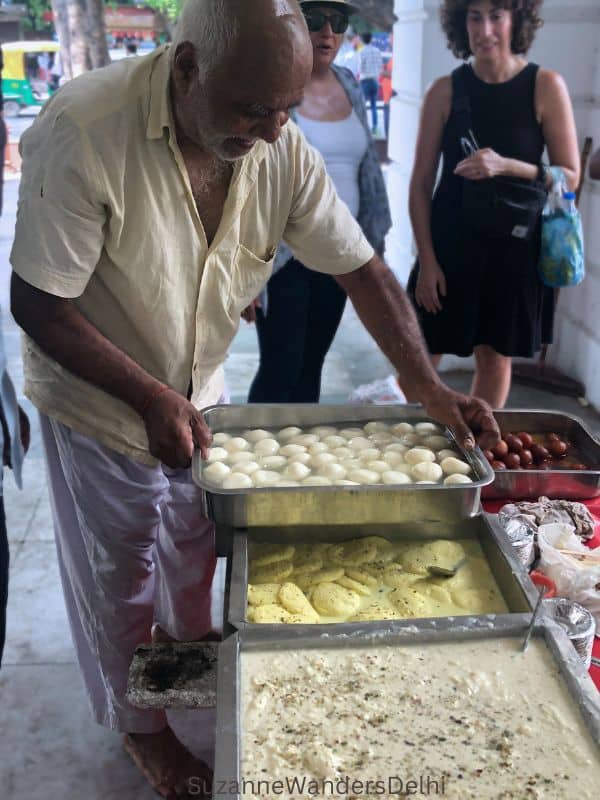
These are my tips on how tourists can safely eat street food in India. This does not just apply to India, this applies everywhere:
- eat at stands that are busy with locals (the Golden Rule of street food eating anywhere)
- do not eat street food during the hot summer months or monsoon season when food spoils quickly
- keep your hands clean
- avoid water based foods like gol gappa and shaved ice
- limit the amount of sauces, like the common yogurt and green chutneys, you consume (they are water based)
- avoid meat unless at a busy kabab stand
- only drink bottled water
Street food in India is super fresh
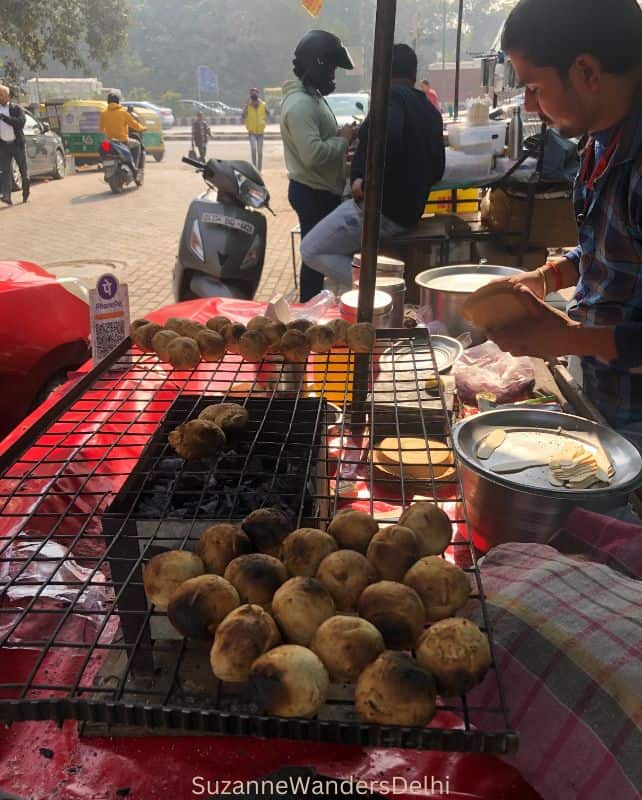
In almost all cases, food is prepared right in front of you with fresh ingredients. Nothing is prepackaged and reheated.
Dals, choles, rotis, puris – everything is cooked right there. As soon as you place your order, that’s when your food is assembled. And these walas (sellers) take a lot of pride in their food. They depend on locals, not tourists, for their livelihood. Many street food stands have been in the same family for decades.
Trust me, if the food was not tasty or high quality, the stand would not last. Indians are foodies, and they won’t eat at a place if it isn’t good.
Your body may need an adjustment period to Indian food
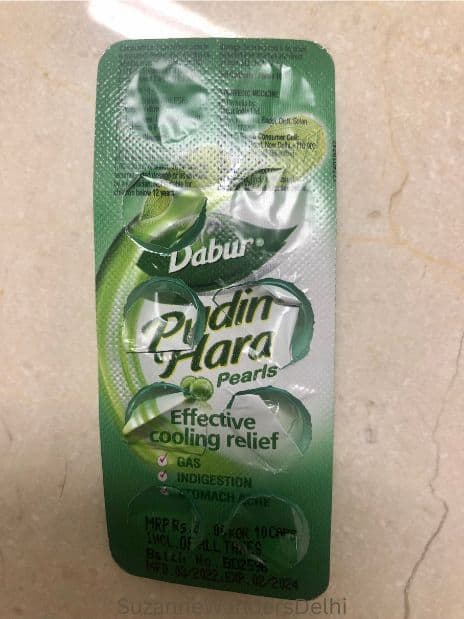
Your body might need a few days to adjust to Indian food. You could eat in the cleanest restaurant with the best ingredients and still experience some discomfort initially.
The water the food is cooked in is different, the soil the food is grown in is different, the ingredients and spices are different. So take it easy the first few days – maybe avoid the Old Delhi street food tour until day 3 or 4.
These pudina (mint) tablets are really good for alleviating mild gastral discomfort. You can pick them up at all the shops, and they’re very inexpensive.
Why do tourists think street food in India is not safe to eat?
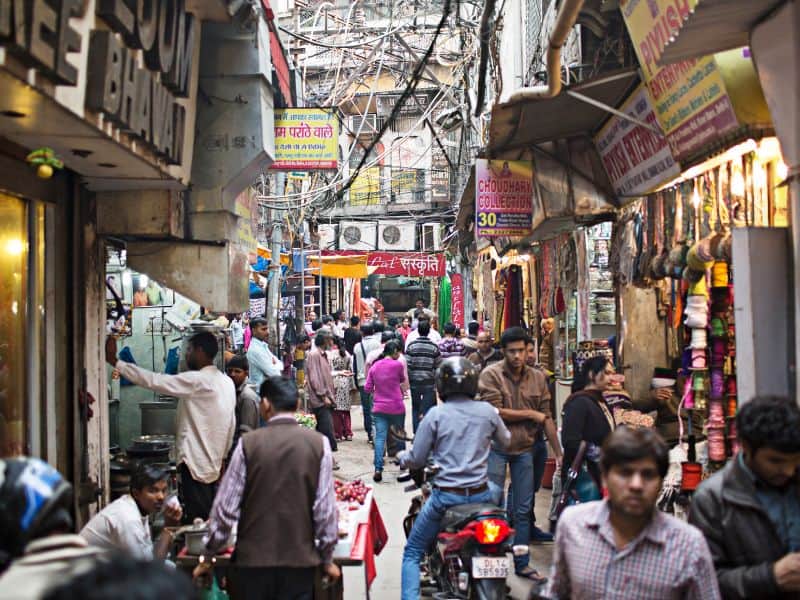
The media has a lot to do with it. India is almost always portrayed in a negative way. Images of crowded, garbage strewn lanes with a tangle of overhead electric wires are often used in news and travel articles.
These images re-inforce that image of India as a dirty, backward country, not somewhere safe for tourists to eat street food. But of course, that’s the absolute worst of India and not indicative of most of the country. In fact, New Delhi is one of the greenest capital cities in the world!
India’s tap water is not potable and this also has a lot to do with the general image of poor food sanitation in India.
And lastly, there’s the nickname for traveler’s diarrhea, Delhi Belly. Mostly the name stuck because it rhymes so well. But when the capital city’s name is used for a stomach upset, it doesn’t really promote a positive food safety image!
Have I ever gotten sick ?
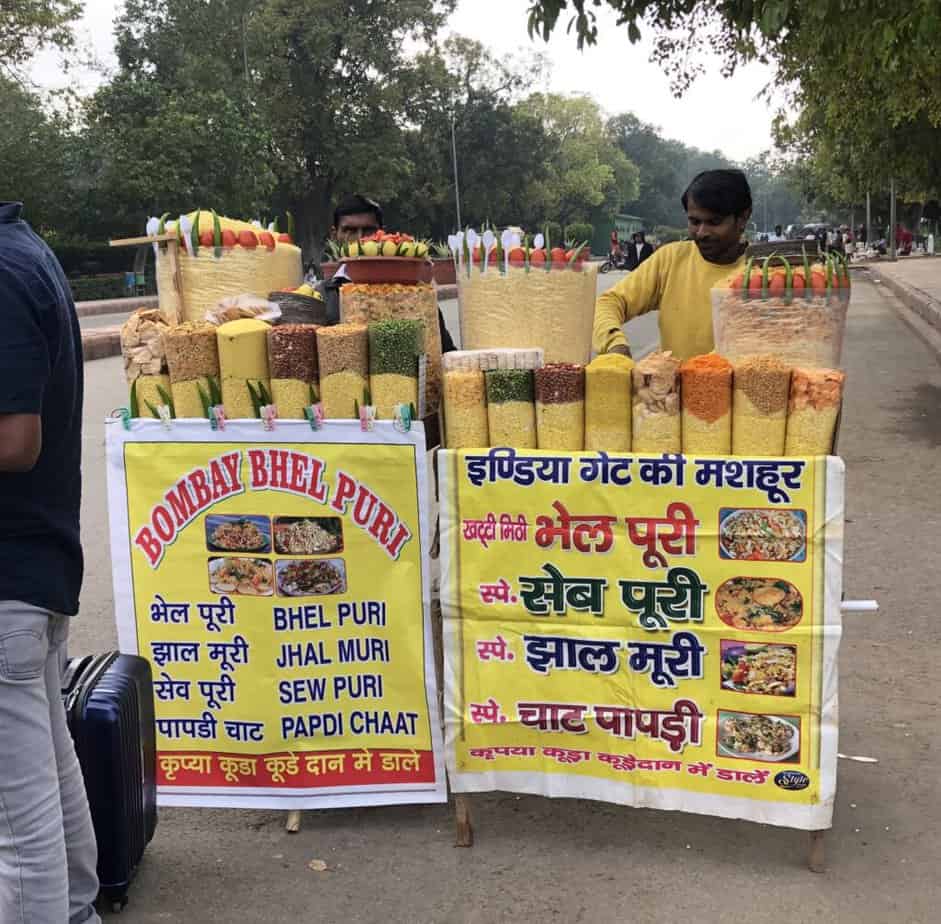
Yes, in five years of living here, I haven’t been able to avoid stomach upsets entirely. I’ve been sick about three times in total. And not all of those have been from street food.
I think I’ve only gotten sick once from actual street food, and that was my own fault for devouring a curd drenched chaat in Old Delhi right in the middle of monsoon season.
Another time the culprit was an undercooked chicken sausage at the breakfast buffet in a very good Amritsar hotel. The last time was at home in Delhi, when I ate raw coconut with the skin before washing it.
If the worst happens, here’s what to do if you get sick in India.
Is the water safe to drink in India?
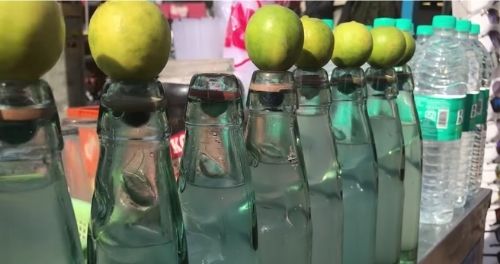
No it is not! Never drink the tap water. Only drink filtered or bottled water. Better restaurants and hotels will serve filtered water, but always ask. Definitely do not accept anything but bottled water on the street. If ordering lassi (yogurt drink) make sure it is made with filtered water.
Do you need to brush your teeth with bottled or filtered water? Well, I’ll leave that to your discretion, but I never do and it’s been fine.
There are some areas in India that have their own clean water source. I lived at Himalayan Orchard Huts in the lower Himalayas for 18 months, and they had their own mountain water source. The tap water was safe there.
The wrap-up – is India’s street food safe for tourists to eat?
India’s street food is safe for tourists to eat as long as you exercise some precautions. By choosing stalls that are busy with locals you can enjoy the vibrant cuisine of India and have a culturally rich experience. Immersing yourself in the local food scene will amplify your Indian adventure. So go ahead and enjoy the delicious street cuisine while exploring this diverse country.
Don’t forget travel insurance! It’s always a good idea to carry travel insurance just in case something goes wrong. I really like and use SafetyWing

